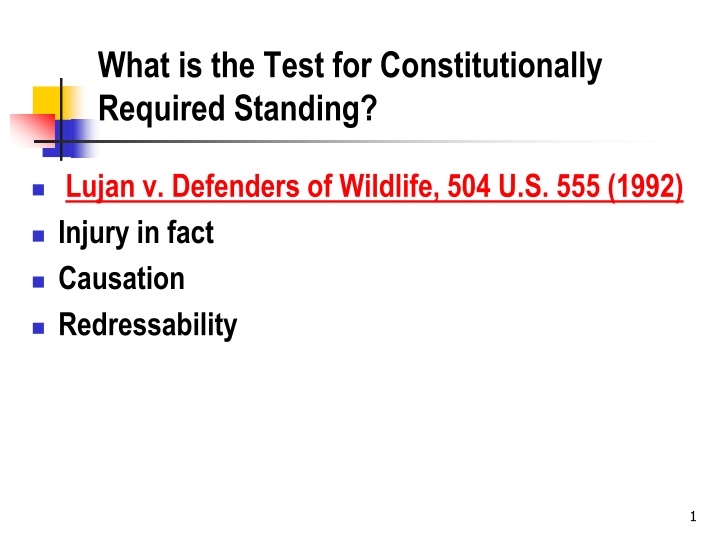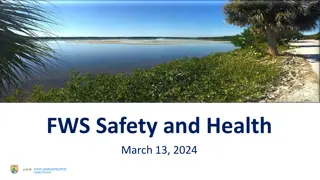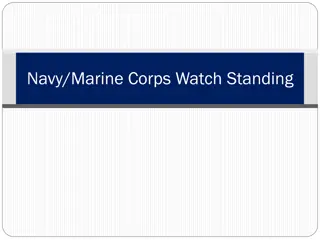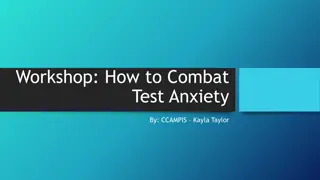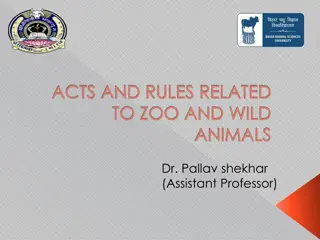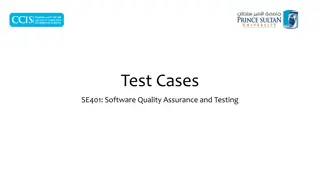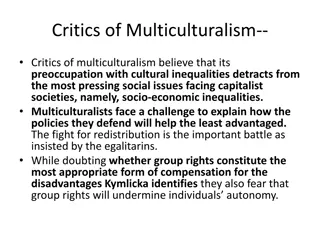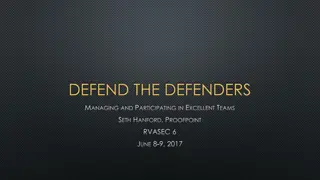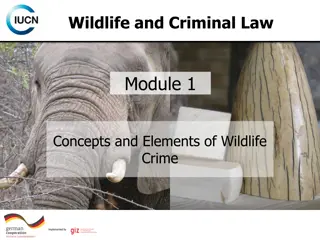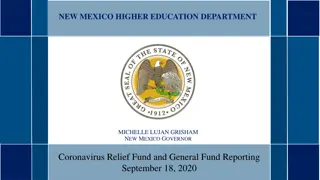Constitutionally Required Standing Test: Lujan v. Defenders of Wildlife (1992)
The constitutionally required standing test involves assessing injury in fact, causation, and redressability. Cases like Louisiana Environmental Action Network v. U.S. E.P.A. and Public Citizen, Inc. v. National Highway Traffic Safety Admin. provide insights into proving injury, especially through statistical and risk-based arguments. The significance of establishing a tangible risk of harm for standing eligibility is highlighted across different legal precedents, emphasizing the need for concrete evidence to support claims.
Download Presentation

Please find below an Image/Link to download the presentation.
The content on the website is provided AS IS for your information and personal use only. It may not be sold, licensed, or shared on other websites without obtaining consent from the author.If you encounter any issues during the download, it is possible that the publisher has removed the file from their server.
You are allowed to download the files provided on this website for personal or commercial use, subject to the condition that they are used lawfully. All files are the property of their respective owners.
The content on the website is provided AS IS for your information and personal use only. It may not be sold, licensed, or shared on other websites without obtaining consent from the author.
E N D
Presentation Transcript
What is the Test for Constitutionally Required Standing? Lujan v. Defenders of Wildlife, 504 U.S. 555 (1992) Injury in fact Causation Redressability 1
Statistical Risk as Injury Historically, courts have accepted a statistical risk of harm, such as increased risk of cancer from a landfill, as injury. The key question is whether there is a scientific basis for the fear, and how strong the evidence needs to be. 2
Risk as Injury Historically, courts have accepted a theoretical risk of harm, such as increased risk of cancer from a landfill, as injury Louisiana Environmental Action Network v. U.S. E.P.A., 172 F.3d 65 (D.C. Cir. 1999) Risk posed by toxic wastes in landfill Is this a real risk? What are the policy implications? What happens to the neighborhood if plaintiff's win? What could the effect be on the NO cleanup after a storm like Katrina? 3
Public Citizen, Inc. v. National Highway Traffic Safety Admin., 489 F.3d 1279 (D.C. Cir. 2007) at least both (i) a substantially increased risk of harm and (ii) a substantial probability of harm with that increase taken into account. If the agency action causes an individual or individual members of an organization to face an increase in the risk of harm that is substantial, and the ultimate risk of harm also is substantial, then the individual or organization has demonstrated an injury in fact. In applying the substantial standard, we are mindful, of course, that the constitutional requirement of imminence as articulated by the Supreme Court necessarily compels a very strict understanding of what increases in risk and overall risk levels can count as substantial. The court wanted specific numbers, which are expensive to get. 4
Summers v. Earth Island Institute, 555 U.S. 488 (2009) Forest service makes a rule that some timber sales can be made without the usual statutory notice and comment. What is plaintiff s problem in getting standing to contest the rule? (Which tree has to be hugged? Plaintiff argues that at least one of its many members will be affected by any possible sale What does the Court say about this probabilistic injury? When will the injury be real? 5
Monsanto Co. v. Geertson Seed Farms, 130 S.Ct. 2743 (2010) Organic farmers contest a Dept. of Agriculture decision to deregulate the planting of GM alfalfa. How could this injury them? Could they show a certainty that one would be injured? The United States Supreme Court accepted this probabilistic injury. How can you distinguish the cases? Do the plaintiffs have to do anything in Summers while waiting for the timber to be cut? What do the Geertson plaintiffs have to do to detect possible damage? 6
Rethinking Risk as Injury Must there be a substantial risk of injury, rather than just a theoretical risk of injury? Why is this easy to satisfy if the class is big enough and you have some evidence of risk? NRDC v. EPA, 464 F.3d 1 (D.C. Cir. 2006) 2 of 500,000 of their members might get cancer 7
Fear of Risk as Injury Why is this key to many toxic tort cases? How can this be manipulated by attorneys? How was this used in the BP spill? Why does this complicate allowing fear to trigger standing? Is there a real violation, such as violating a permit to dump toxic materials? This creates a plausible fear if you swim in the river. Friends of the Earth v. Laidlaw Environmental Services, 528 U.S. 167 (2000) 8
